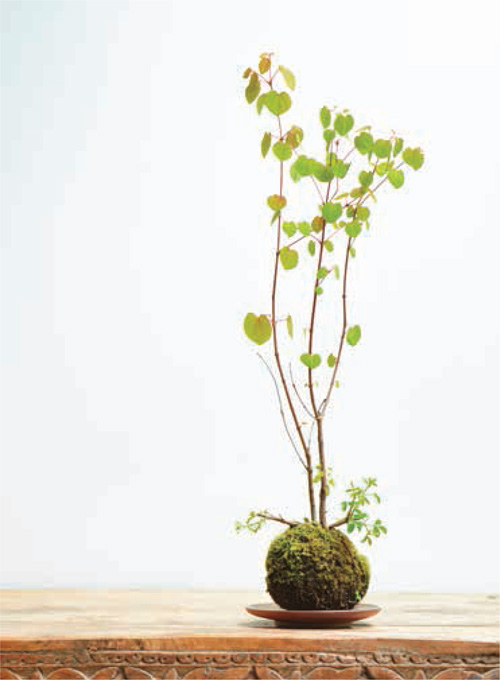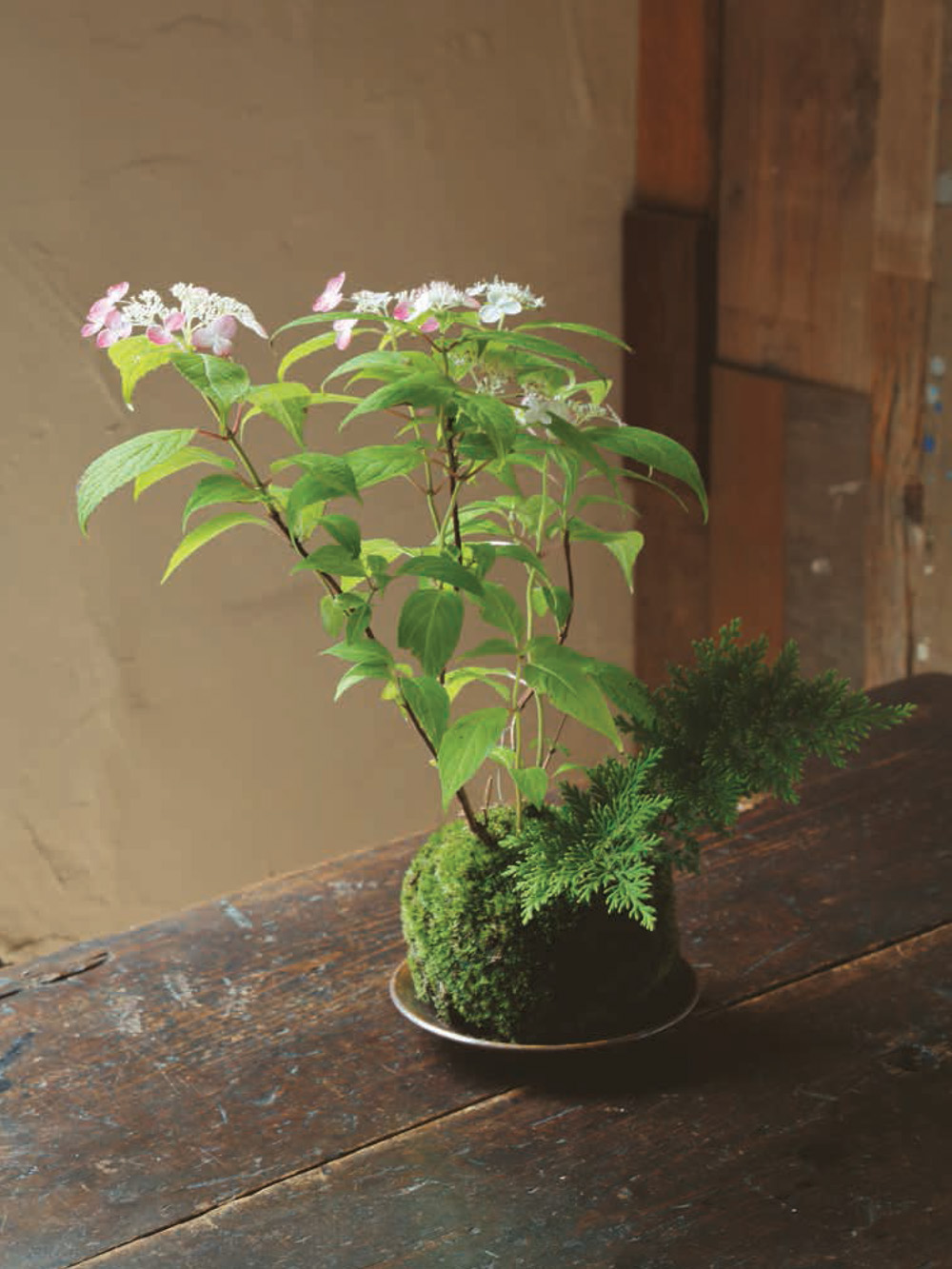Making and Sustaining the Forest
Moss is known to be one of the earliest life forms on the planet. Unlike other plants, moss doesn’t use vascular tissues to transport water and nutrients, but instead absorbs everything directly through the leaves and stems. With this special ability, moss can live as long as it has light and moisture.
There are thousands of different types of moss on the planet. Moss has many purposes in the ecosystem and it’s very resilient. For example, when there’s a wildfire, the first thing to grow back is moss. The spore is easily carried to different places, allowing moss to migrate great distances. Even without dirt, moss is able to grow. Eventually, wherever moss grows, a forest follows.
Moss also maintains the forest’s humidity by collecting rainwater, thereby keeping nutrients and dirt from ebbing away. In addition, reproduction of other life forms such as insects depends on moss. These are just some of the ways our ecosystem relies on moss.
The layer of moss nourishes new sprouting trees and also protects it from fungi invasion. Unlike soil, it houses no grass to prevent light from reaching the sprout. This is an ideal set up to raise a seed to the first sprout.
For sure, the forest can’t exist without moss.
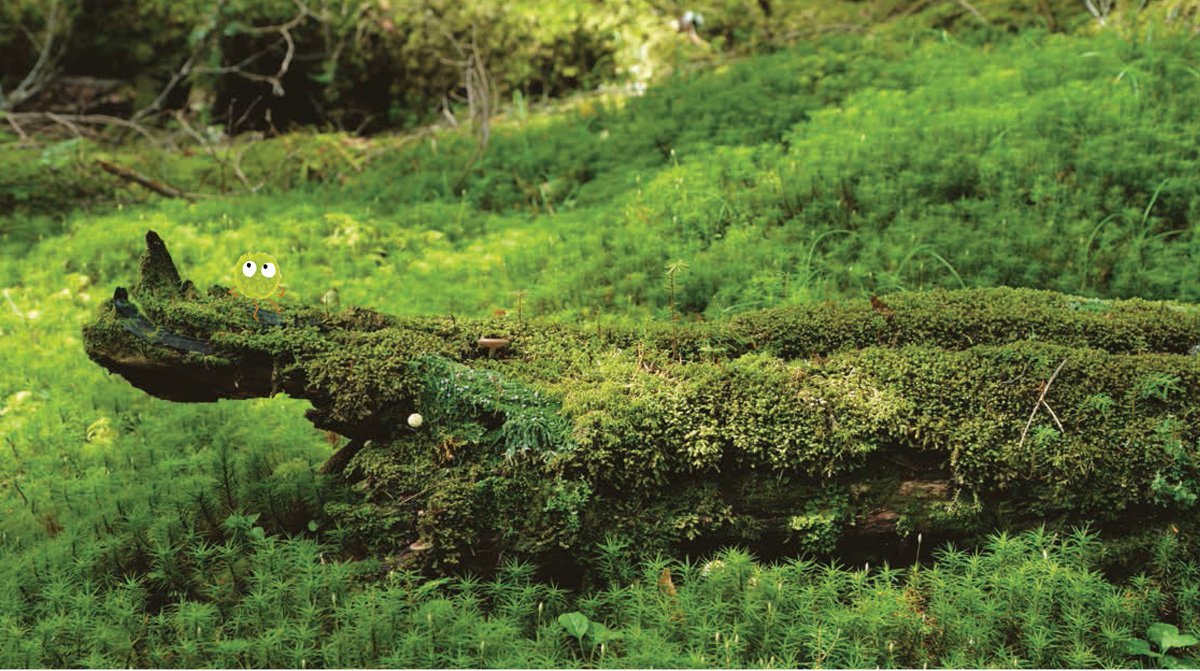
1. Polytrichum growing thickly on a dead tree trunk.
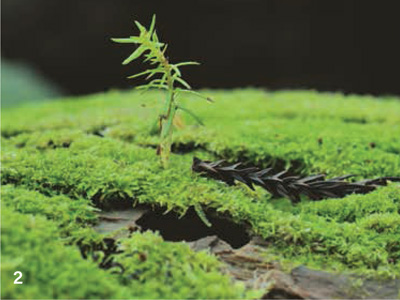
2. Cedar sprouting out of a moss-covered trunk.
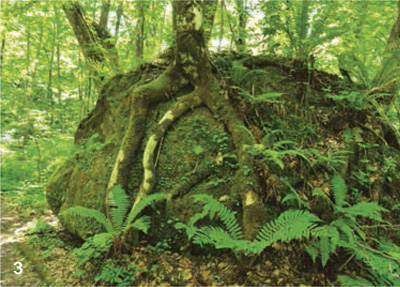
3. A tree that sprouted from a moss-covered stone. The moss on the stone can be seen as a nurturer of new life.

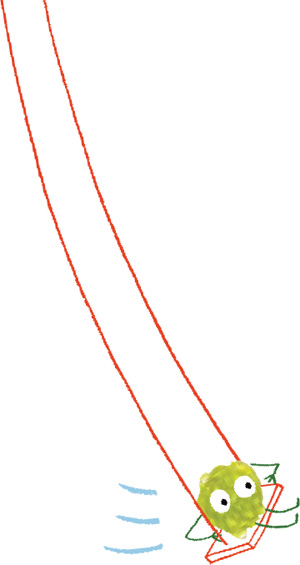
Heart-shaped leaves make it extra lovely. Katsura moss ball (p. 78).
Add a Bit of Nature to Your Home
Kokedama (koke-=moss; dama=ball) is a work of bonsai art. Moss found its way into the making of bonsai long ago, and it’s no wonder. The level of precipitation in Japan is higher than average in comparison to other countries, making the climate very suitable for moss—Japan grows about 1800 different types!
Moss is used in bonsai in various ways. A moss ball is a carefree, light-hearted kind of gardening, and making moss balls is something that anyone can enjoy doing.
Put simply, with kokedama, moss takes the place of a pot. You can enjoy a different sort of aesthetic with this style of planting. Your plants are displayed as they would appear straight from the forest or garden—simple and completely natural.
Mountain Hydrangea moss ball (p. 69). A combination with Spike moss.
It is easy to create a moss ball if you have all the right tools and ingredients. At garden shops you’ll find a huge variety of plants in progress. Just choose the one you’d like to grow inside a moss ball—and there’s no need to stop at just one.
For starters, you should choose a plant that’s easy to grow and care for, either from a garden shop or from your own yard (see How to Make Moss Balls starting on p. 16).
Some examples for starters:
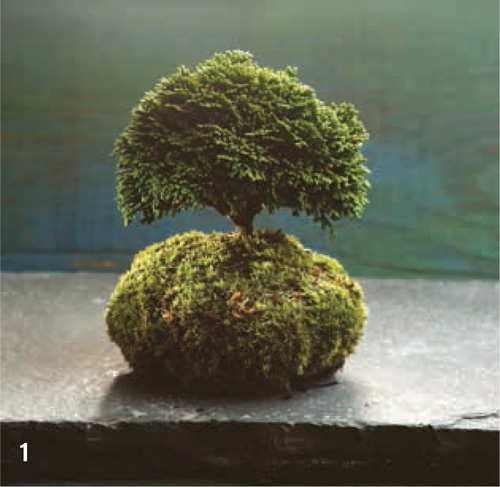
1. Hinoki moss ball (p. 80).
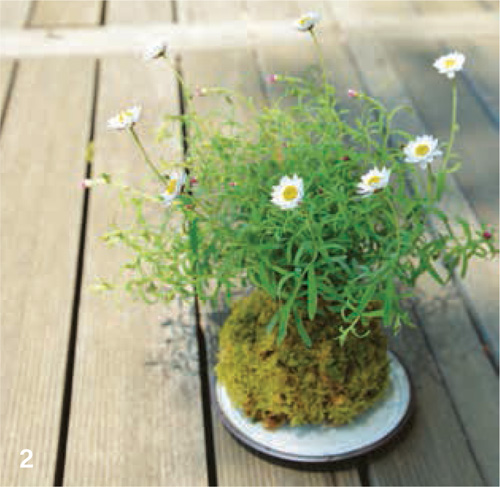
2. Paper Cascade moss ball (p. 63).
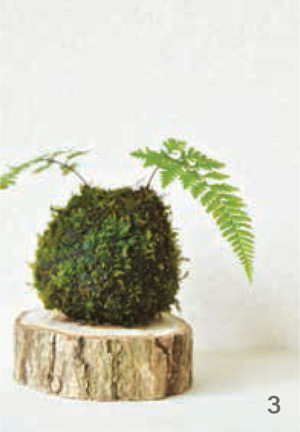
3. Fern moss ball.
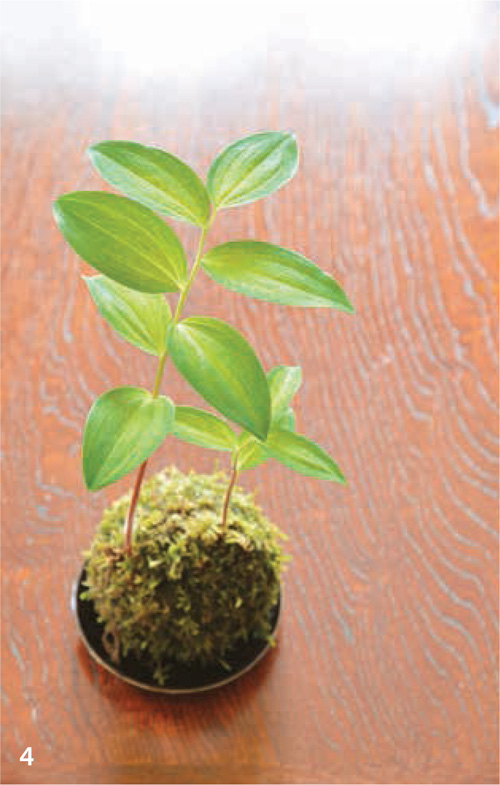
4. Solomon’s Seal moss ball (p. 85).
Having a moss ball in your home adds a little character to your living space. When you become more skillful at creating moss balls you can do many things to jazz them up. You can try hanging them or tweak the shapes a little (p. 31). You can even try several different plants together.
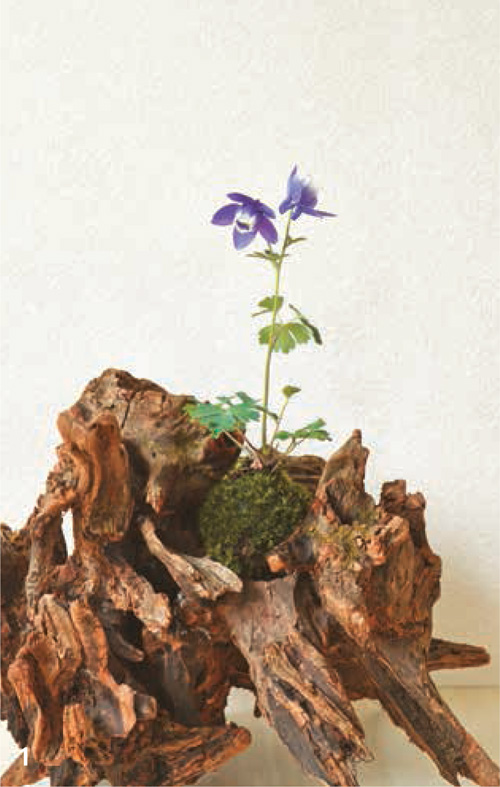
1. Columbine moss ball with driftwood (p. 62).
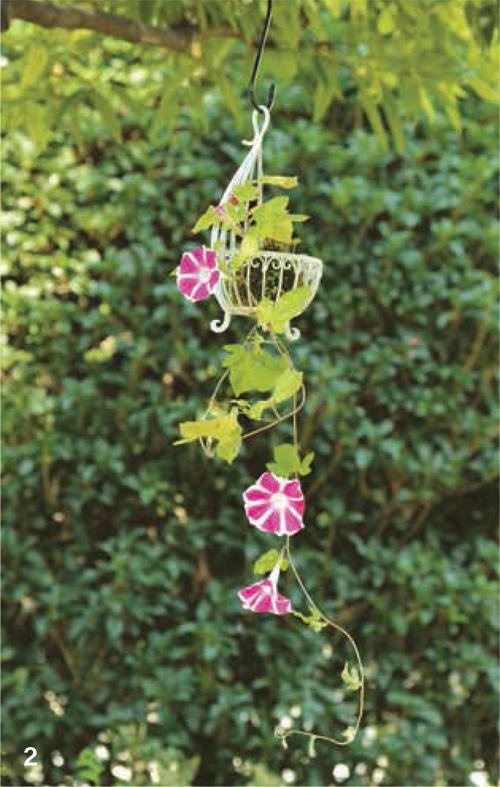
2. Hanging vines of Morning Glory moss ball (p. 72).
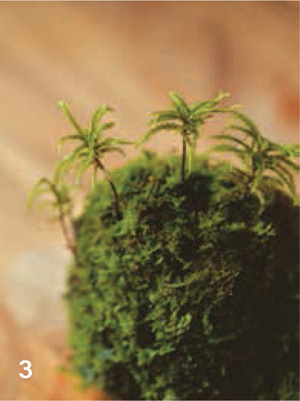
3. Moss on moss ball. Japanese Climacium moss ball (p. 94).
Another way to have fun with mosses is to simply grow them in glass containers (p. 43). If there’s a lid to your container, you can easily grow it in your room. Moss also makes a fun and unusual gift.
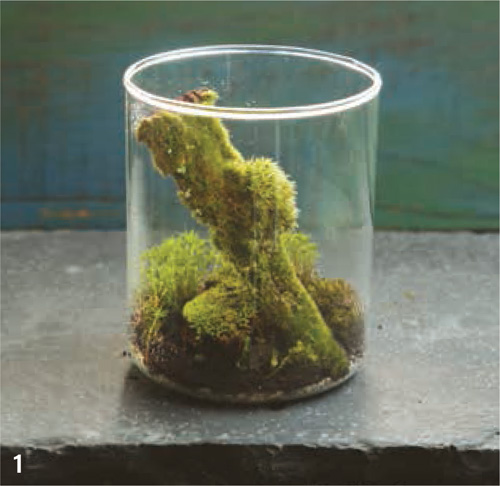
1. Multiple mosses started from Japanese dried moss, planted in a glass container.
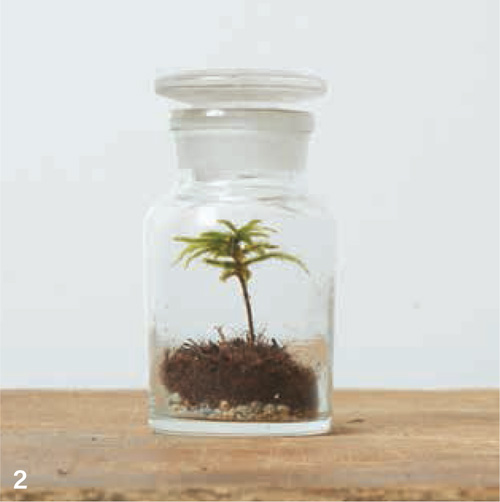
2. Japanese Climacium moss in a medicine jar.
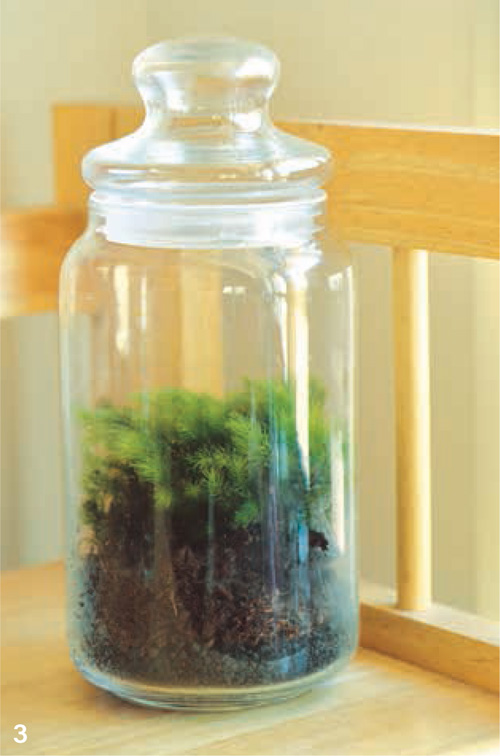
3. Hinoki moss growing in a jar.
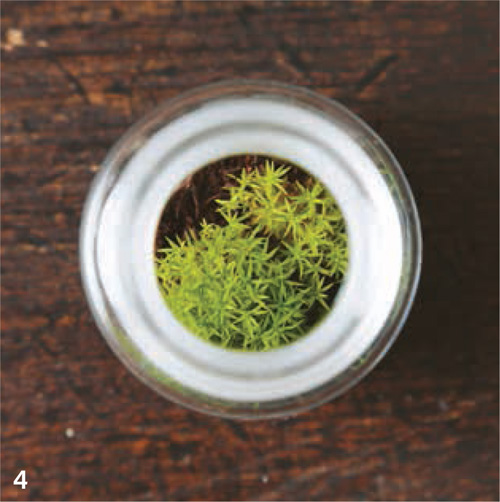
4. Juniper haircap in a jar, seen from above.
